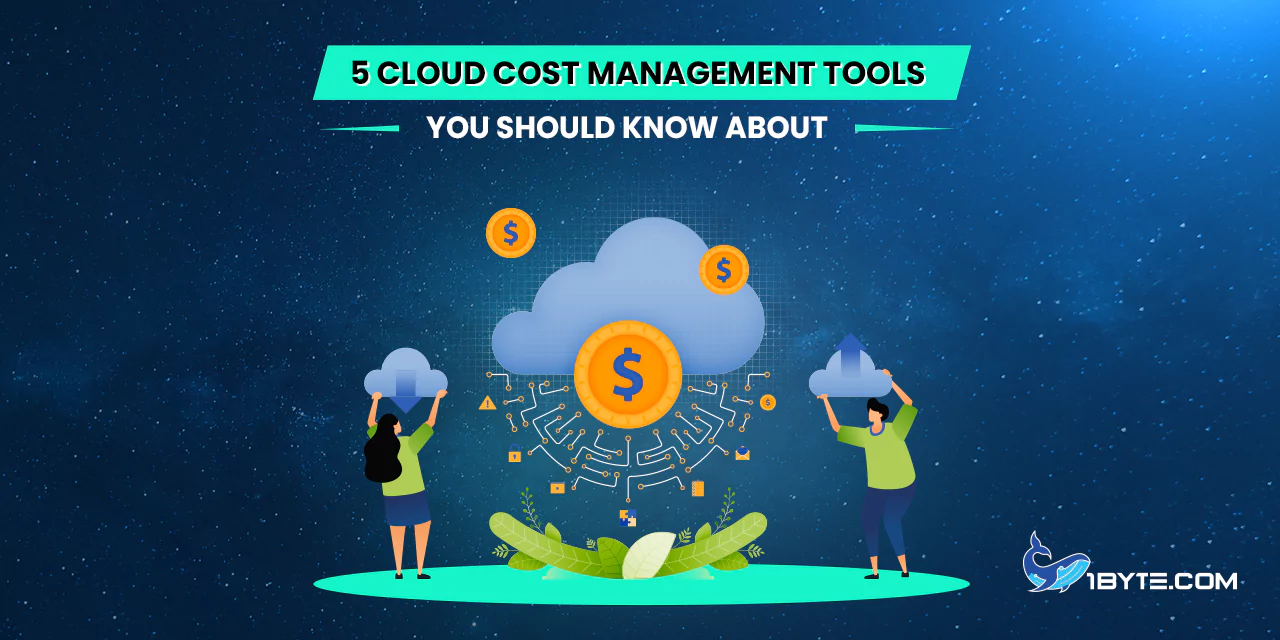Do you want to know how to properly control your cloud costs? There is no need to look any further! In this post, we’ll go into the area of cloud cost management and look at five effective tools for cutting costs. These tools will enable you to make educated decisions, maximize your budget, and achieve improved financial efficiency in the cloud, whether you are a small business or a huge enterprise. So, let’s get started and discover the game-changing cloud cost management tools.
What is Cloud Cost Management?
Are you interested in learning more about cloud cost management and how it might help your business? In this section, we’ll explain it in layman’s words.
The Definition of Cloud Cost Management
So, exactly what is cloud cost management? When it comes to employing cloud services, it’s all about keeping a careful watch on your spending.
Assume you had a bucket full of money, and each time you utilize the cloud, money begins to pour out. Cloud cost management is similar to having someone standing beside you, assisting you in ensuring that money does not overflow and go to waste.
In layman’s terms, it’s about controlling and optimizing your cloud resource spending. You want to ensure that you’re getting the most bang for your money, and cloud cost management solutions can help you achieve just that.
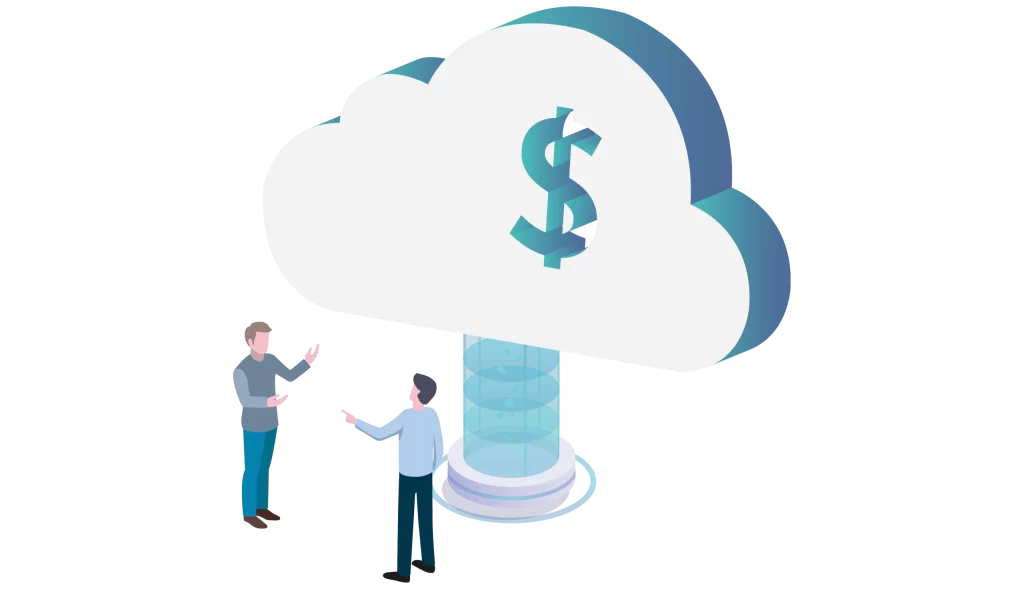
These tools assist you in monitoring your cloud usage, tracking costs, and identifying areas for cost savings. They provide insights into which resources are being used the most, how much they are costing you, and where you may make changes to cut wasteful costs.
Cloud cost management is the equivalent of hiring a financial advisor for your cloud spending. It allows you to make informed decisions and avoid unpleasant surprises when the bill arrives.
By carefully monitoring your cloud expenditures, you can ensure that you are only paying for what you require and prevent overspending. It’s all about being wise with your cloud budget and getting the most bang for your buck.
Statistics on Cloud Cost Management
Let’s look at some eye-opening data that demonstrate the significance of cloud cost management:
- 67% of firms said cloud financial management (CFM) has helped them grow revenue, while 31% said it has helped them maintain revenue. Cloud cost management isn’t only about saving money; it can also help organizations expand their income.
- 93% of businesses have a plan in place to forecast cloud expenditures. The majority of businesses understand the need of projecting cloud expenses, suggesting a proactive attitude to cost control.
- The main issue for 64% is “cost management and containment” when it comes to cloud computing. Controlling costs and staying within budget is a primary concern and issue for many cloud-based enterprises.
- 40% of businesses cite cloud cost management as their top issue with public clouds. When it comes to public clouds, many businesses view cloud cost management as the most difficult challenge.
- For the fifth year in a row, 61% of firms intend to optimize existing cloud use for cost savings, making it the top effort. Organizations constantly prioritize cloud usage optimization to generate cost savings, indicating its ongoing importance.
These numbers clearly show that cloud cost management is a critical part of company cloud operations. It not only aids in revenue development and profit retention, but it also handles cost containment and optimization difficulties. Organizations can better control their spending, estimate expenditures, and achieve significant long-term cost savings by establishing efficient cloud cost management techniques and leveraging the correct tools.
Recommended reading: 10 Essential Practices for Ensuring Cloud Web Security
5 Best Cloud Cost Management Tools
Are you looking for the best cloud cost management tools? We’ve got your back! Consider the following excellent options for managing and improving your cloud expenses:
GCP Billing
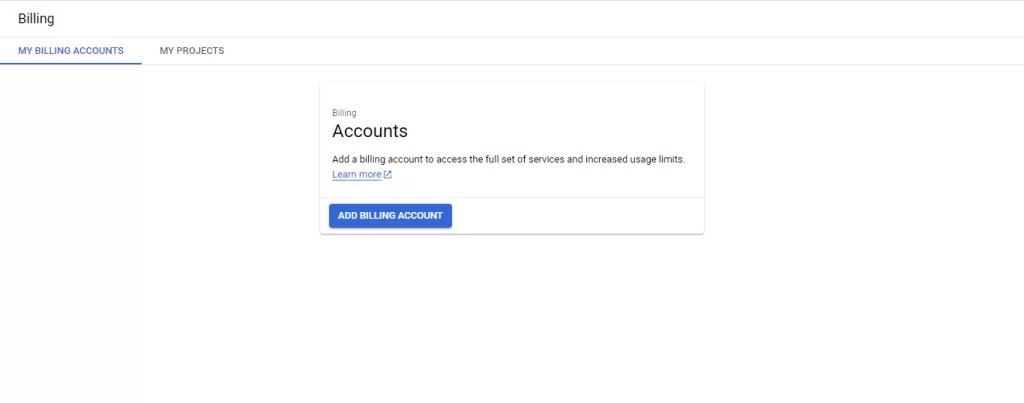
Let’s dive deeper into GCP Billing, the built-in tool of the Google Cloud Platform, and understand its key features and limitations:
- Regular reporting and spending analysis: GCP Billing provides users with regular reports to understand their GCP cloud bills. It also offers spending analysis, allowing users to gain insights into their cost patterns.
- Recommendations for cost control: With GCP Billing, users receive actionable advice on how to prevent overpaying and optimize their cloud spending.
- Budgeting alerts: GCP Billing includes budgeting alerts, which notify users when their costs approach or exceed the set thresholds, helping them stay within their budget limits.
- Suitable for high-level cost overview: GCP Billing is a solid choice for companies that use Google Cloud and need a high-level overview of costs and potential saving opportunities across their entire cloud infrastructure.
- Limited granularity and advanced capabilities: However, for businesses with larger projects and teams, GCP Billing may fall short due to its lack of granularity and advanced features.
Pros of GCP Billing
- High-level overview: GCP Billing offers users a comprehensive view of their cloud spending, providing a clear understanding of costs.
- Actionable cost control advice: Users benefit from recommendations on how to control their budget and optimize spending.
- Basic features for simple cost structures: GCP Billing provides a good mix of features suitable for companies with straightforward cost structures.
- Accessible data via API: The tool offers an API, allowing users to access their data using their preferred analytics tools.
- Free to use for GCP customers: GCP Billing comes at no additional cost for Google Cloud Platform customers.
Cons of GCP Billing
- Tag hygiene for granular visibility: Achieving granular cost visibility requires good tag hygiene practices from the team.
- No overview of idle or unallocated resource costs: GCP Billing lacks visibility into costs related to idle or unallocated resources.
- Limited analysis beyond GCP: The tool focuses solely on analyzing costs within the Google Cloud Platform and does not provide insights into costs outside of GCP.
- Not ideal for optimizing complex hybrid cloud or container costs: GCP Billing’s limited capabilities make it less suitable for optimizing complex hybrid cloud solutions or container costs.
Overall, GCP Billing is a useful tool for gaining a high-level understanding of cloud costs and implementing basic cost control measures within the Google Cloud Platform. However, for more advanced cost optimization needs or businesses with complex infrastructures, alternative tools may be more suitable.
CloudAdmin
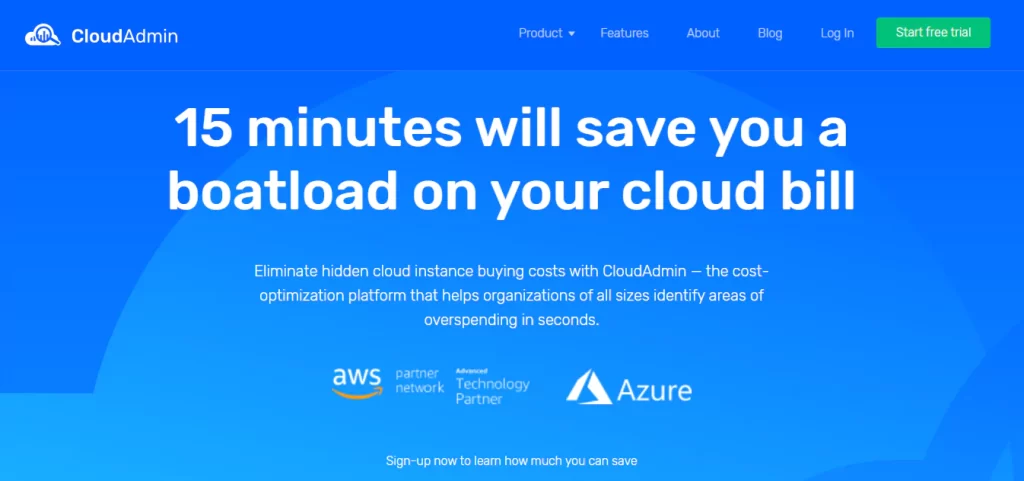
CloudAdmin is a unique SaaS-based software that assists businesses of all kinds in identifying and optimizing public cloud overspending. Here are some of the reasons why CloudAdmin is worth considering for effective cloud cost management:
- Quick sign-up: CloudAdmin allows you to get started in just 3 minutes, allowing you to quickly utilize its extensive capabilities.
- 14-day risk-free trial: CloudAdmin provides a 14-day risk-free trial, allowing you to explore its capabilities and decide its worth for your business.
- Real-time visibility into cloud resources: CloudAdmin gives you real-time visibility into your cloud resources, so you can remain on top of your consumption and costs.
- CloudAdmin is designed to help you minimize your cloud costs in both single and multi-cloud situations, whether you rely on a single cloud provider or operate in a multi-cloud environment.
Pros of CloudAdmin
CloudAdmin is a versatile cost-cutting solution that is appropriate for businesses in any industry that rely on public clouds. Its benefits include:
- Easy onboarding is made possible with a quick sign-up process and a free trial.
- Real-time visibility into cloud spending for improved cost management.
- Recommendations for properly optimizing cloud utilization.
- Hourly snapshots of the environment for extensive monitoring.
- Custom notification and alarm systems for proactive cost control.
- No staff training is required due to the intuitive user interface.
- Lightweight tool with simple setup and comprehensive onboarding assistance.
- CloudAdmin provides the features and capabilities required to minimize your cloud expenses and maximize your return on investment when it comes to cloud cost management.
AWS Cost Explorer
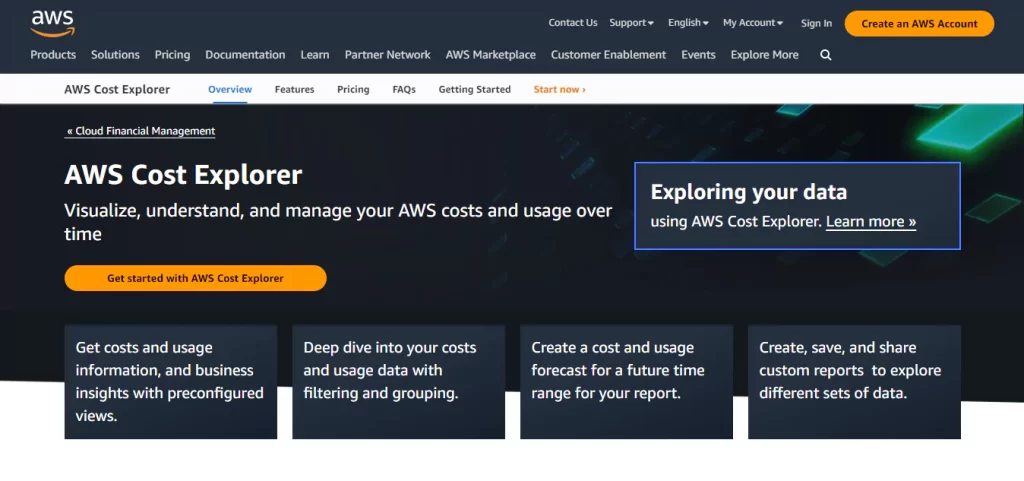
Let’s look at AWS Cost Explorer, an Amazon Web Services built-in tool meant to assist users investigate and understand their cloud usage expenses. What you need to know about AWS Cost Explorer is as follows:
- Analyze expenditure trends and cost drivers: AWS CE enables users to perform high-level data analysis, assisting them in identifying spending trends and understanding the major elements driving their expenses.
- Identify spending anomalies: AWS CE allows users to identify any unusual or unexpected spending trends, allowing them to examine and address potential cost anomalies.
- AWS Cost Explorer is an excellent starting point for businesses operating on a modest scale in the cloud, providing a high-level overview of their cloud computing expenditures. However, depending only on AWS CE for cost management might become operationally hard as the team grows.
Pros of AWS Cost Explorer
Here are some advantages of using AWS Cost Explorer:
- AWS CE gives a full perspective of cloud usage expenses, allowing users to understand their invoices and better plan future budgets.
- Users can quickly construct custom views and apply filters to control expenditures based on their individual requirements.
- Use analytics graphs and charts to visualize usage: AWS CE provides analytics graphs and charts to assist users view and analyze their cloud usage trends.
- Personal recommendations for cost-cutting opportunities: The application offers individualized recommendations to assist users in identifying potential cost-cutting opportunities.
- Users can build bespoke reports that examine their consumption statistics, providing better insights into their cloud charges.
- AWS CE allows users to evaluate data for the last 13 months, allowing them to track and compare cost changes over time.
- API integration: The product provides an API through which customers can connect their favorite analytics tools, allowing for smooth data integration.
- AWS Cost Explorer is offered at no additional cost to enterprises that already use AWS services.
Cons of AWS Cost Explorer
However, there are certain restrictions to consider:
- AWS CE’s user interface may not be as visually beautiful or intuitive as those of competing solutions.
- Users can only see cost reports after they have occurred, making AWS CE more reactive than proactive in cost control.
- No complete view of costs associated with idle or unallocated resources: The tool does not provide a full view of expenses connected with idle or unallocated resources.
- For granular cost visibility, strong tag hygiene is required: Users must maintain good tag hygiene and properly tag their resources in order to achieve detailed cost visibility.
- AWS Cost Explorer only supports AWS use, making it less suitable for businesses with hybrid or multi-cloud infrastructures.
AWS Cost Explorer provides important insights into AWS cloud usage prices, making it a handy tool for businesses looking for a high-level overview of their cloud expenses. However, it is critical to assess its limitations and determine whether it is appropriate for your specific cost management requirements.
Apptio Cloudability
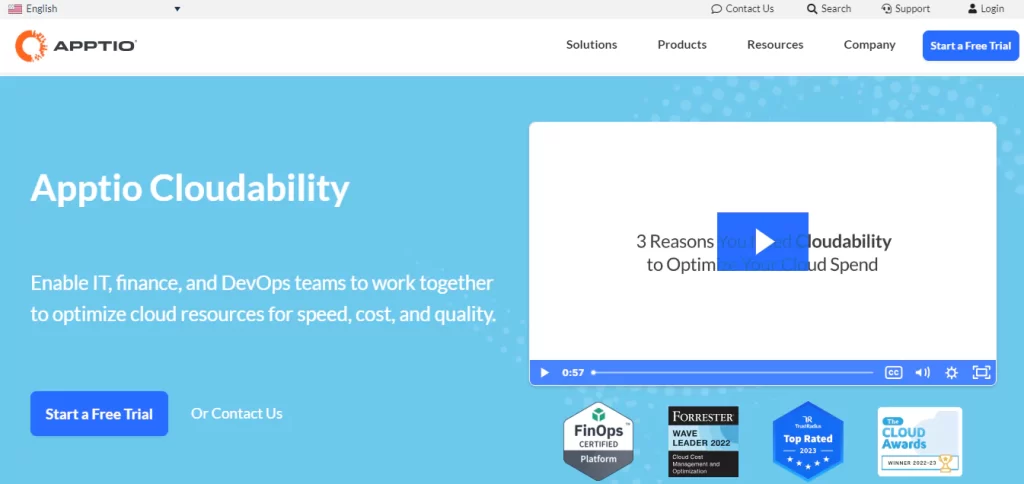
Let’s look into Apptio Cloudability, a cost-cutting tool that focuses on increasing insight into cloud spending and minimizing consumption. Apptio Cloudability’s primary features and considerations are as follows:
- Apptio Cloudability includes various optimization capabilities, such as rightsizing, reservation purchase management, anomaly detection, and very accurate forecasting.
- Organize and manage expenses: Using numerous tagging options, views, mappings, dashboards, and reports, the solution assists businesses in successfully organizing and managing their costs.
- Cost visualization during cloud migration: Apptio enables businesses to visualize their cost profile during the cloud migration process.
- Apptio Cloudability gives comprehensive insight into cloud pricing, making it a viable choice for businesses wanting greater transparency. Because of its integration options with ITFM (IT Financial Management) solutions, it excels in particular for FinOps and finance teams.
Pros of Apptio Cloudability
Here are some advantages of Apptio Cloudability:
- Various cost-cutting functions: The tool includes a number of capabilities for cutting cloud costs, such as rightsizing and reservation purchasing management.
- High levels of cost transparency: Apptio Cloudability offers exceptional cost transparency in the cloud, giving users a clear picture of their spending.
- Excellent user interface (UI): The product has a user-friendly interface that makes it simple to navigate and use its capabilities.
- Apptio Cloudability employs a complicated decision-making system that gives insightful recommendations to assist customers in making informed cost-saving decisions.
- Users can generate comprehensive and personalized reports based on tags, accounts, and resource categories, allowing them to assess expenditures from many viewpoints.
- Apptio Cloudability offers interaction with IT Financial Management (ITFM) technologies, making it an excellent alternative for FinOps and finance teams.
- Multi-cloud cost visibility: The solution supports multi-cloud setups, allowing customers to see costs across multiple cloud providers.
- Apptio Cloudability has a built-in explorer that discovers any missing tags across the infrastructure, ensuring complete cost visibility.
Cons of Apptio Cloudability
However, there are a few things to keep in mind:
- While Apptio Cloudability provides great support for AWS, it may be limited in its support for Azure, GCP, and on-premises stacks.
- Object storage optimization: The tool’s ability to optimize object storage costs might be improved.
- Occasional bugs: While using the tool, users may encounter bugs or technical challenges.
- Learning curve: Apptio Cloudability has a steep learning curve that will take considerable time and effort to master.
- Limited configuration options for suggestion policies: Users may find it difficult to tailor the recommendation policies to their individual needs.
- Cost visibility at a daily granularity: Costs are accessible at a daily granularity, which may not provide the amount of detail required by some users.
- Price changes may not be correlated with specific engineering modifications, potentially restricting insights into the core reasons of cost swings.
Apptio Cloudability is a comprehensive cloud cost optimization technology that gives full transparency into cloud prices as well as useful recommendations. While it has some limits, it can be a useful tool for businesses looking to optimize their cloud spending and effectively control costs.
Harness Cloud Cost Management
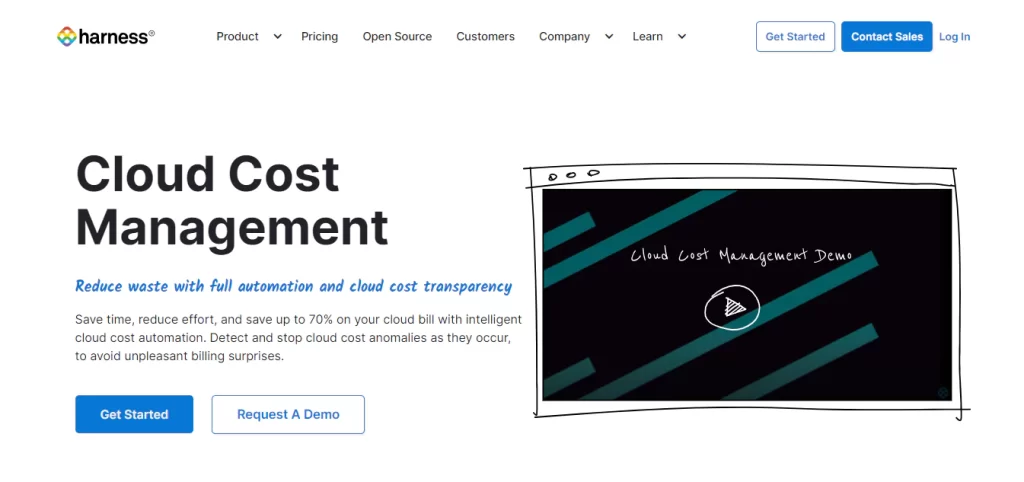
Let’s have a look at Harness, a cloud cost optimization tool developed for current cloud-based organizations. Harness focuses on proactive savings and provides a variety of solutions to help you reduce cloud costs. What you need to know about Harness Cloud Cost Management is as follows:
- Harness focuses on proactive cost optimization through features such as anomaly detection, precise budgeting and forecasting, cost thresholds, and automation.
- Custom alerting across dimensions: Users can configure custom alerts across several dimensions such as apps, clusters, and environments to ensure that cost-saving opportunities are discovered as soon as possible.
- Granularity for cost visibility: Harness offers granularity at multiple levels, allowing customers to classify and monitor cloud expenses such as apps, individual microservices, different environments, clusters, deployments, and configuration changes.
- Developers using Harness get fast feedback on how deployment, scaling, and cluster changes affect cloud utilization, allowing them to make informed decisions and optimize cloud usage.
- Harness is ideal for businesses with different teams that demand complete control over their cloud resources. Because it integrates cloud events and deployment changes with its own Continuous Delivery (CD) platform, it is a popular choice for DevOps teams.
Pros of Harness Cloud Cost Management
Here are some advantages of utilizing cloud cost management:
- Harness takes a proactive approach to cost minimization and gives users with a high level of control over their cloud resources.
- Visibility into resource utilization: The solution provides customers with visibility into utilized, idle, and unallocated resources, allowing them to identify cost-cutting opportunities.
- Predictable cloud expenses: Harness enables precise forecasting, allowing businesses to properly anticipate and plan for cloud expenditures.
- Customizable recommendations system: Users can tailor the recommendations system to their own cost-cutting objectives and techniques.
- Harness provides accurate chargeback capabilities without the need for significant labeling, which simplifies cost allocation and responsibility.
- Integration with a native Continuous Delivery (CD) platform: The solution interacts effortlessly with a native Continuous Delivery (CD) platform, correlating cloud spending to deployment modifications and offering significant insights into cost consequences.
- Harness allows integrations with a variety of other tools and platforms, which increases its capability and adaptability.
Cons of Harness Cloud Cost Management
However, there are a few things to keep in mind:
- Harness can be expensive depending on how cloud resources are deployed, thus it’s critical to carefully analyze the cost implications.
- Harness is a very new tool, and as such, it may not have the same level of polish and maturity as some of its competitors.
- Ongoing feature development: While developers are constantly adding new features to Harness, some functionality may still be lacking.
- Cultural shift and training requirements: Adopting Harness may necessitate a cultural shift inside the organization in terms of cloud cost accountability, as well as some employee training and migration initiatives.
- Documentation: At the moment, the tool’s documentation might use some work.
Harness Cloud Cost Management offers a comprehensive set of capabilities for proactive cost minimization and detailed expense visibility. It is an excellent solution for businesses with multiple teams and a desire for complete control over their cloud resources. Businesses can manage their cloud costs and make data-driven decisions to achieve cost efficiency by exploiting its capabilities.
Leverage 1Byte’s strong cloud computing expertise to boost your business in a big way
1Byte provides complete domain registration services that include dedicated support staff, educated customer care, reasonable costs, as well as a domain price search tool.
Elevate your online security with 1Byte's SSL Service. Unparalleled protection, seamless integration, and peace of mind for your digital journey.
No matter the cloud server package you pick, you can rely on 1Byte for dependability, privacy, security, and a stress-free experience that is essential for successful businesses.
Choosing us as your shared hosting provider allows you to get excellent value for your money while enjoying the same level of quality and functionality as more expensive options.
Through highly flexible programs, 1Byte's cutting-edge cloud hosting gives great solutions to small and medium-sized businesses faster, more securely, and at reduced costs.
Stay ahead of the competition with 1Byte's innovative WordPress hosting services. Our feature-rich plans and unmatched reliability ensure your website stands out and delivers an unforgettable user experience.
As an official AWS Partner, one of our primary responsibilities is to assist businesses in modernizing their operations and make the most of their journeys to the cloud with AWS.
Conclusion
Cloud cost management is a continuous activity that demands attention and regular assessment. Businesses may efficiently conrol their cloud costs, maximize resource utilization, and achieve cost effectiveness by leveraging these technologies, thereby driving their cloud operations to success.
Remember that cloud cost management is about making informed decisions and maximizing the value of your cloud investments, not merely saving money. With the appropriate tools and tactics, you can achieve the ideal balance of cost efficiency and cloud performance.

